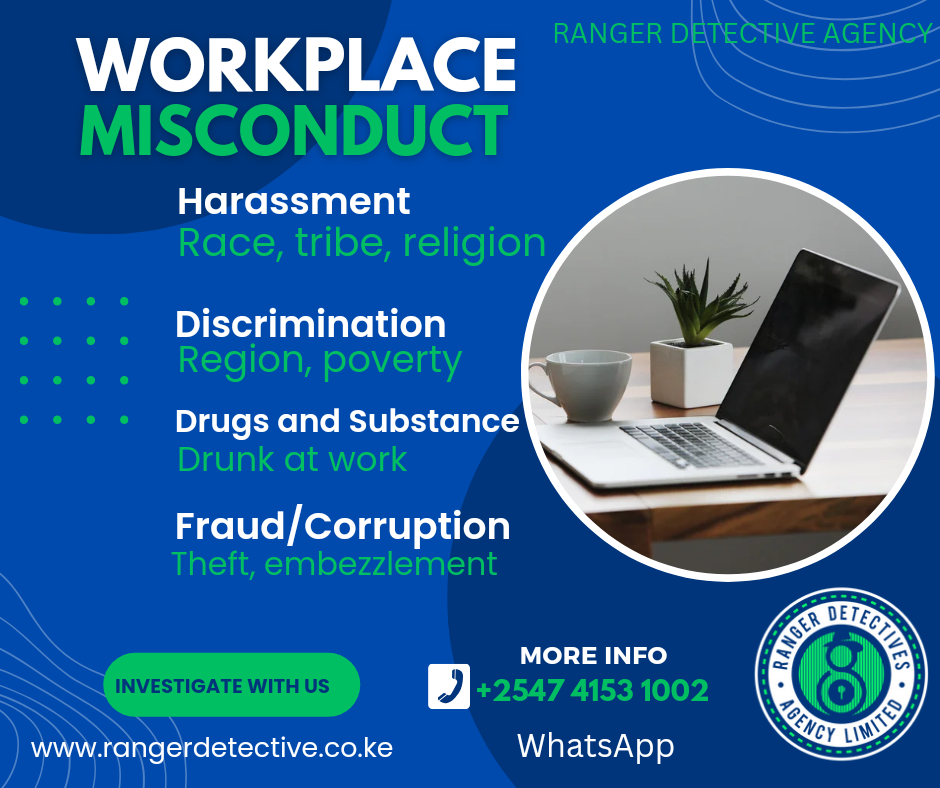Fraud and Workplace Misconduct Process

Conducting a Workplace Fraud Investigation: A Step-by-Step Guide
- Preparation
Thorough preparation is essential for a successful fraud investigation. Failing to prepare is preparing to fail.
Fraud Policy and Procedures
Every organization must have a clear fraud policy and investigation procedures. Begin by reviewing company policies to ensure compliance and adherence to established protocols.
Selecting the Investigation Team
Form a multidisciplinary investigation team comprising professionals such as HR, IT, legal counsel, forensic accountants, auditors, and fraud investigators. The team should be carefully selected to avoid backbiting cases such as conflicts of interest, collusion, or management overrides.
- Initial Assessment
Identifying the Allegation
Gather intelligence on fraud claims, including statements from witnesses and whistleblowers, initial evidence, and any relevant details.
Assessing the Scope
Determine the potential impact and scale of the fraud by analyzing the allegations and available evidence. This helps in allocating resources and defining the direction of the investigation.
- Evidence Collection
Gathering Documents and Records
Collect all relevant documentation, including financial statements, transaction logs, emails, communication records, and any other supporting materials.
Conducting Interviews
Interview employees, whistleblowers, and witnesses to gather additional perspectives and insights into the fraudulent activity.
Preserving Evidence
Ensure that all evidence is securely stored and maintained to prevent tampering, loss, or destruction.
- Evidence Analysis
Reviewing and Analyzing Data
Examine financial records, emails, communications, and other documents to identify discrepancies, unusual patterns, or anomalies.
Cross-Checking Findings
Verify the accuracy of the gathered information by cross-checking it with multiple sources.
- Documentation and Reporting
Compiling the Investigation Report
Document all findings, including evidence, analysis, conclusions, and key observations. Ensure the report is clear, factual, and objective.
Providing Recommendations
Suggest corrective actions, which may include disciplinary measures, process improvements, or policy changes to prevent future fraud occurrences.
- Implementation and Follow-Up
Enforcing Corrective Actions
Address weaknesses in policies, procedures, or internal controls that allowed the fraud to occur. Implement necessary changes to prevent recurrence.
Ongoing Monitoring and Prevention
Regularly monitor for signs of fraudulent activity and establish a culture of vigilance within the organization.
- Legal and Compliance Considerations
Consulting Legal Counsel
Ensure that all investigative actions comply with legal requirements and organizational policies. Seek legal advice before taking any disciplinary or legal action.
Involving Authorities
If the fraud is significant or involves criminal activity, report the matter to law enforcement or regulatory agencies as necessary.
By following these steps, organizations can conduct a thorough and effective fraud investigation, ensuring transparency, accountability, and compliance with legal standards. You can also outsource from professional investigators from Ranger Detectives Agency